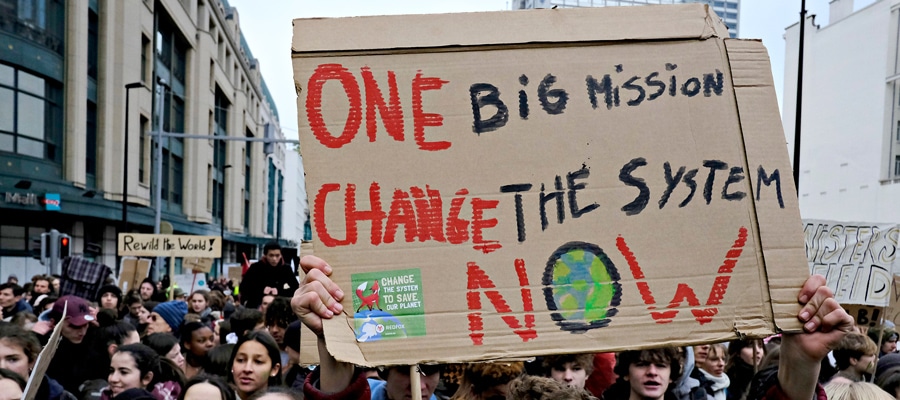Canada has an uneasy history when it comes to fossil fuels and climate change. Our leaders have been great at setting far-off targets for reducing greenhouse gas (GHG) or carbon emissions, then failing to meet them.
As part of the 2015 Paris Agreement on climate change, Canada committed to a 30-per-cent reduction in carbon emissions by 2030 relative to 2005 levels. As of 2017, Canada’s emissions were only two per cent below 2005 levels so we have a lot of work to do.
New modelling by the federal government shows that Canada is not even close to being on a pathway to meeting its 2030 target—even after including all of the recent measures tabled by federal and provincial governments.
Canada’s challenge is not just that we are a consumer of fossil fuels for our energy needs, we are also a major producer of fuels for export. More than one-quarter of Canada’s total carbon emissions come from the extraction and processing of oil and gas. The fact that the Paris Agreement commits countries to reducing emissions within their boundaries, but not the carbon that is extracted at home and burned elsewhere points to a major shortcoming in the Agreement.
New modelling shows Canada is not even close to being on a pathway to meeting its 2030 target.
Canada’s oil and gas production emissions in 2017 were 23 per cent higher than 2005 levels and the federal government projects they will grow by another seven to 15 per cent by 2030.
Plans to further increase Canada’s exports of fossil fuels are thus contradictory to the spirit and intentions of the Paris Agreement. By accommodating increasing oil and gas emissions, all other sectors of the economy need to tighten their belts even more if Canada is to meet its target.
To walk its talk on climate, Canada must contemplate how to wind down those fossil fuel sectors, not ramp them up. Some of this thinking is now happening when it comes to shrinking coal production used to generate electricity, but it has yet to be integrated into policy for oil and gas.
Such a managed wind-down should be built on four pillars.
- Canada should commit to a carbon budgeting framework similar to the United Kingdom, which would compel policy-makers to confront the classic economic problem of how to allocate resources subject to a budget constraint.
Carbon budgeting would be more like the way we plan for annual government budgets: a target is set at the start of the year along with actions on how it will be achieved, followed by routine monitoring and reporting.
A carbon budget would also provide a lens with which to evaluate new proposed infrastructure. For example, approval of bitumen pipelines and liquified natural gas (LNG) export terminals will lock in higher production emissions for many decades to come. - Divesting from fossil fuels will require major new investments in green infrastructure and a national green industrial strategy. At a macroeconomic level the best defense is a good offense: efforts to create new employment in areas that decarbonize the economy as well as supporting more inherently green jobs in the service sector such as child care and seniors’ care.A lot of work will be required to make the transition off of fossil fuels, which should be embraced as a collective, nation-building project.
- We need to be mindful of the regional nature of resource employment and develop a “just transition” for workers and communities.Alberta is already leading the way with a strategy and programs for workers affected by the province’s phase-out of coal-fired electricity (although this may change with the new Alberta government).A federal Just Transition task force recently added to this conversation, but the same dialogue needs to be extended to oil and gas production.
- Enhancing public returns to resource development through carbon pricing and royalty reform will be needed to pay for the transition. An increase in revenues of just one per cent of GDP, for example, would raise $20 billion per year and investing in green areas would—conservatively—support 140,000 jobs.
In addition to reducing our carbon emissions, climate action would reap many other health and environmental benefits. These ideas for a managed wind-down are currently unthinkable in the Canadian political context, but the times are a-changing. To do its share of the heavy lifting, a managed wind-down of oil and gas production must be on the table.
—
A version of this article was first published in the The Hill Times.


